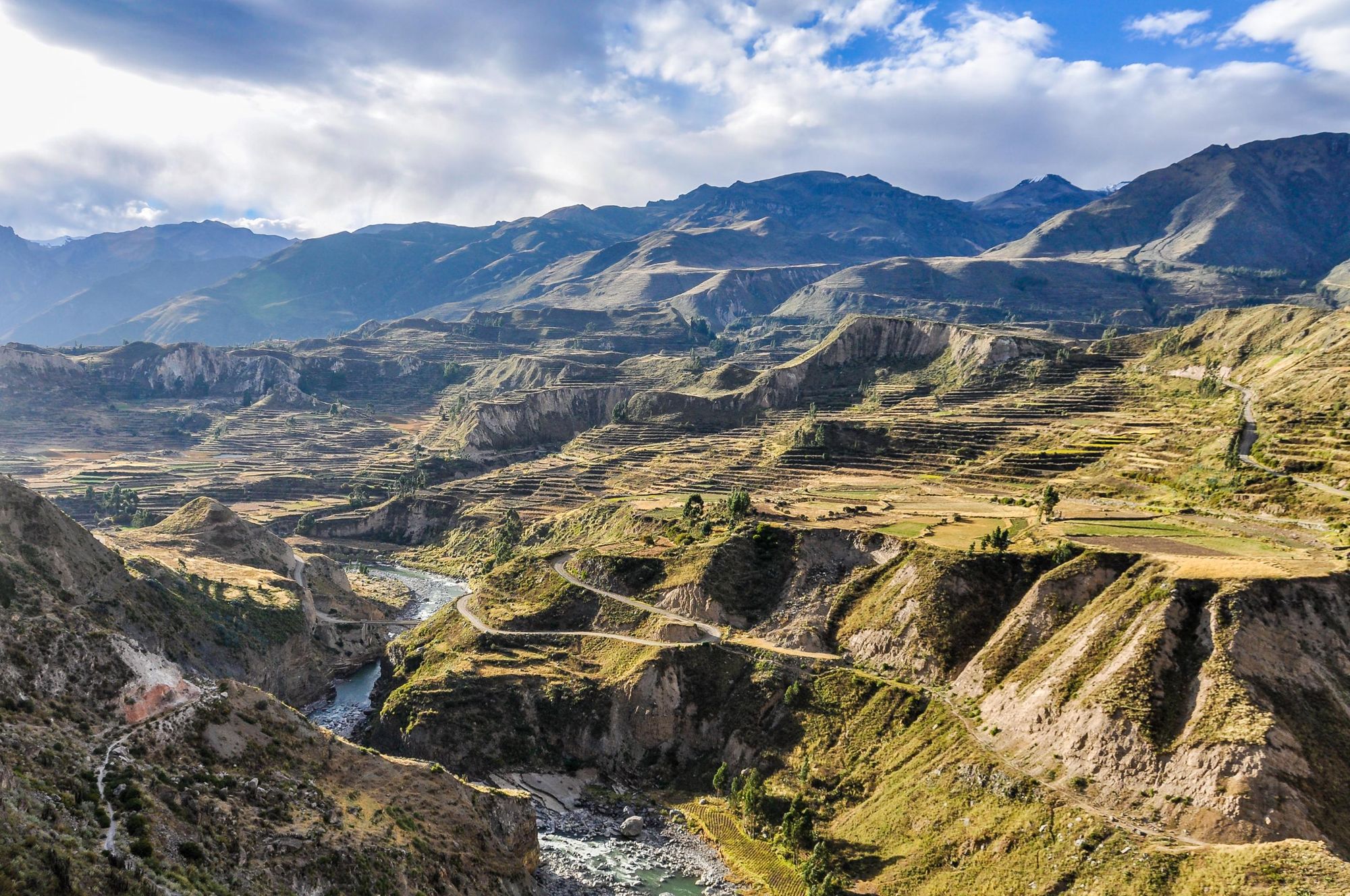You’d be forgiven if you thought trekking in Peru was all about the Inca Trail. And whilst it’s the most famous hike in Peru, there are much better ways to discover the glory of the Peruvian Andes on foot, away from the crowds and well off the beaten track - some of which also include a visit to Machu Picchu.
The variety of trails in Peru is pretty immense and is often considered to include some of the best trekking in the world. From 5000+ metre snow-capped peaks (or cordilleras) to glaciers, cloud forests, canyons and dry plateaus, there is an enormous variety of terrain spread across this stunning country. Lost civilisations have built their cities and settlements in the Andes – some have been discovered, while others still remain hidden in the jungle.
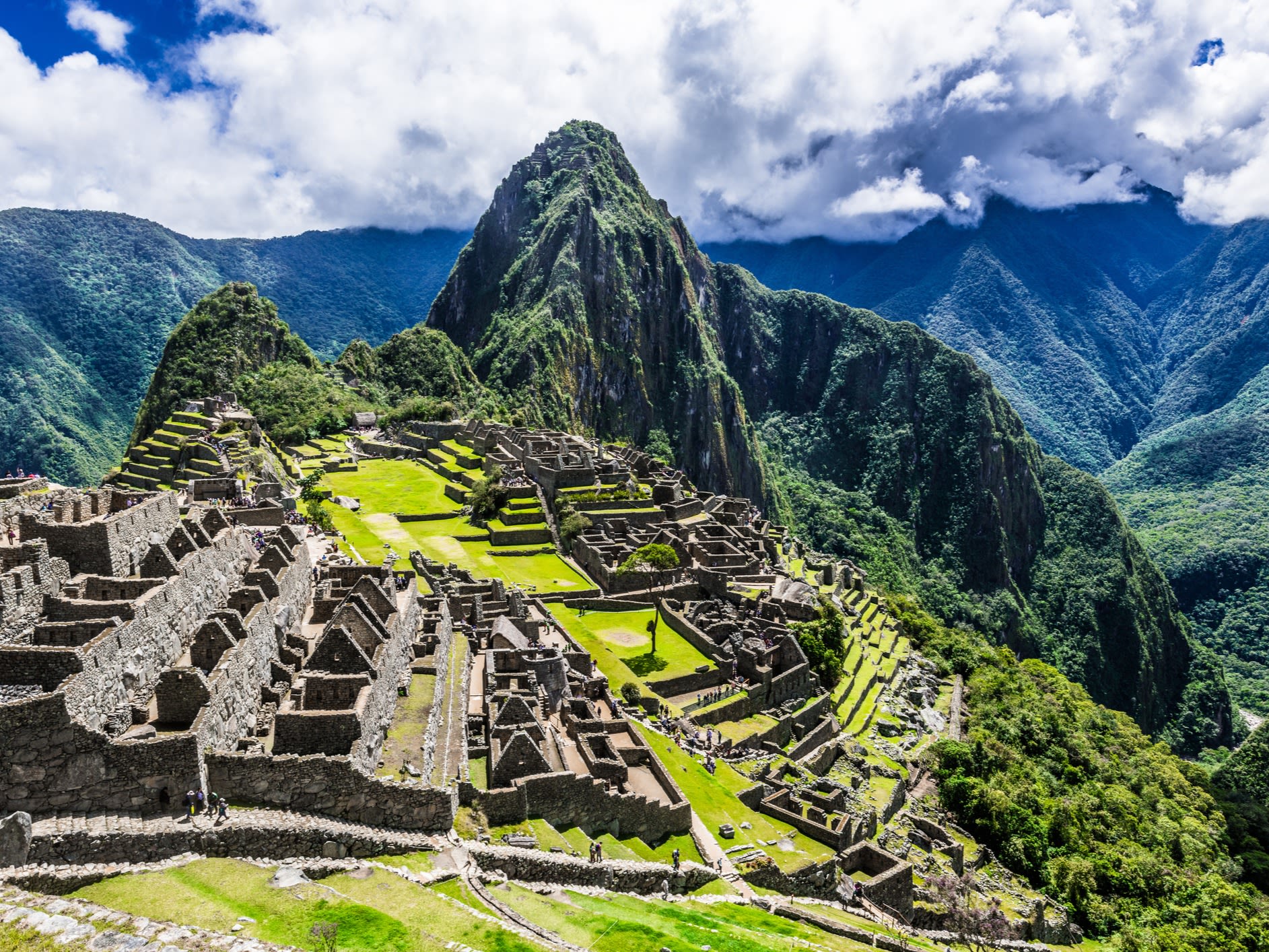
The two main trekking hubs in Peru are Huaraz in the north (which is the gateway to the Cordillera Blanca mountain range), and the ancient Inca city of Cusco in the south, which the starting point for most trails toward Machu Picchu.
So, where to start? Below are five epic treks in Peru that aren’t the Inca Trail:
- Alpamayo Circuit Trek
- Huayhuash Circuit Trek
- Santa Cruz Trek
- Climb Mount Pisco
- Salkantay Trek to Machu Picchu
But first, we've plotted their general locations on a map, to show the spread.
The Best Peru Hikes: Mapped
Here you'll find the rough location of each Peruvian hike features on this list, with Machu Picchu also plotted on the map as a golden star for reference.
1. Alpamayo Circuit Trek

- Start/Finish: Hualcayan
- Distance: approx. 85 miles (136km)
- Duration: 10-15 days
- Difficulty: Challenging
- Best for: Quiet trails and peaks that rival Nepal
The Alpamayo Circuit has often been ranked as one of the most spectacular treks in the world - and it’s no wonder why. On this 10-day trek, you’ll traverse around the unique, pyramid-shaped Alpamayo (5,947m/19,511ft). It's often called the world's most beautiful mountain, and the views on this trail are genuinely remarkable. You'll be crossing high and windy passes, walking by snow-capped mountains, massive glaciers and through verdant green valleys.
Set in the Cordillera Blanca, with the nearest base being the mountain town of Huaraz, this challenging trek is brimmed to the rafters with ancient Andean trails, pre-Incan ruins, and friendly Quechuan communities.
On day seven, you’ll get to see Alpamayo up close and personal as you climb up to the old basecamp, with awesome views of 5000m+ peaks, including Huascaran (6,768m/22,204ft), the highest point in Peru, Mount Taulliraju (5,830m/19,127ft) and Mount Rinrijirca (5,808m/19,055ft).
The trail can be tough; its remote location, challenging passes and extreme high altitude mean its best tackled with a local guide. Fluctuating between 3,650m (11,975ft) and 4,780m (15,682ft), you will need to take time to acclimatise. The path can be difficult to find at times, it is truly off the beaten track, having an experienced guide will take a lot of that pain away.
2. Huayhuash Circuit Trek

- Start/Finish: Huaraz
- Distance: 80 miles (128km)
- Duration: 8-12 days
- Difficulty: Challenging
- Best for: A bustling trail in the high mountains
On this gruelling eight to 12-day multi-day trek, you’ll circumnavigate the cluster of stunning mountains that make up the Cordillera Huayhuash, south of the Cordillera Blanca. The trail leads you over numerous high passes, the highest two being over 5,000 metres, and the rest rarely dipping below 4,000 metres.
The extreme remoteness takes you through some of the most sparsely inhabited parts of the Andes, and as such, it’ll definitely test your endurance to the limit.
We’re not going to lie, this hike is a toughy.
En route you’ll encounter remote mountain vistas, turquoise lakes, towering peaks, knife-edge ridges and hand-carved passes chipped into the rocks. Some of the highlights include catching a glimpse of Yerupajá (6,635m/21,768ft), Peru’s second highest mountain, and the Siula Grande (6,344m/20,813ft), the real-life location behind Joe Simpson’s Touching the Void.
This remote trail has minimal facilities. The few camp areas are managed by local communities and are very basic, you may well need to wash in the streams and lakes that pepper the landscape.
Due to the exceptionally high altitude, with a couple of very long days, the trek is considered to be very difficult. Its elevation and isolated setting mean that it’s not only tough to evacuate, but you must, must take time to acclimatise. Falling foul of altitude sickness here is not a good idea. Going with an experienced and local guide will not only keep you safe, but show you sections, and tell you stories that you wouldn’t experience otherwise.
3. Santa Cruz Trek

- Start/Finish: Vaqueria/Cashapampa
- Distance: 34 miles (55km)
- Duration: 3-4 hours
- Difficulty: Moderate
- Best for: A multi-day hike for those with less time
The Santa Cruz Trek is probably one of the more famous trails in Peru's Cordillera Blanca, and therefore it can get a little crowded, particularly in peak season (May to September – the dry season). However, compared to some of the other routes in the area it is far more accessible. The trek takes only four days to complete, covering around 31 miles (50km), and it doesn’t include the volumes of high-passes that you get elsewhere.
Located in the Huascarán National Park, the most common place to start from is La Vaqueria. As you wind through the ancient Inca roads of the Cordillera Blancas, you’ll navigate the Punta Union (the highest section of trail at 4,759m/15,613ft), pass by the as blue-as-you-like Ichiccocha and Jatuncocha Lakes (Big and Small Lake in Quechua), and get a stonking vantage point of Huarascan (6,768m/22,204ft), and the Alpamayo (5,947m/19,511ft).
Compared to most, the trail is well-marked and can be done without a guide. But, as with all Peruvian hikes, the altitude and solitude make it risky. You’ll also need a permit, and working with a local guide can not only get that for you, but you’ll also get more help carrying your pack.
If you only have limited time in Peru, the Santa Cruz Trek is the perfect choice, both for its diversity and brevity, but be prepared to bump into a few other folks with the same intentions.
4. Climb Mount Pisco (5,752m)

- Start/Finish: Huaraz (or Base Camp Pisco)
- Height of mountain: 5,752m (18,871ft)
- Duration: 3-4 days
- Difficulty: Challenging
- Best for: Summit baggers
Okay, a bit of a wild card throwing a mountain into the mix, but hear us out. Mount Pisco (5,752m/18,871ft), named after the Peruvian drink celebrated with on the first ascent, is situated 60km north of Huaraz and sits at the heart of the Cordillera Blanca. It is considered to be the easiest peak to climb in the range and is often used for acclimatisation before ascending one of its loftier neighbours above 6000 metres.
Even though labelled an easy peak, Pisco is still remarkably high, and you still need to be mindful of the altitude and risks that go with it. Having said that, the climb in not-technical, especially via the west face, however, large sections of ice have melted in the past, making the so-called easier routes, not so easy. You’ll still need to don crampons, ropes and ice-axes for the glacier sections.
From the top, you get glorious 360-degree panoramic views of the surrounding peaks including Mount Huandoy (6,395m/20,980ft), Chopicalqui (6,354m/20,846ft), Chacraraju (6,108m/20,039ft), Artesonraju (6,025m/19,767ft) and both summits of Huascaran.
Typically done in three days, you definitely need a guide to conquer Pisco. The weather is prone to dramatic changes, and they can get you up and down safely, ensure you’re acclimatised to lower the risk of altitude sickness and provide and teach you how to use the equipment needed for those more techy sections.
5. Salkantay Trek to Machu Picchu

- Start/Finish: Mollepata/Aguas Calientes
- Distance: 46 miles (74km)
- Duration: 4-5 days
- Difficulty: Moderate
- Best for: An alternative route to Machu Picchu
The trek that everyone thinks about when you mention Peru is the Inca Trail. Located in the mountains around the ancient city of Cusco, in the Sacred Valley, this classic route can be very over-crowded, so much so that the number of visitors has been capped. Of course, the absolute highlight is reaching Machu Picchu, the 15th-century Inca citadel set in the middle of the Peruvian Jungle.
But there is another way to visit Machu Picchu: The Salkantay Trek.
Voted one of the best 25 treks in the world by National Geographic, the Salkantay route takes you on a spellbinding journey beneath the magnificent Salkantay (6,271m/20,574ft), meaning ‘Savage Mountain’ in Quechua.
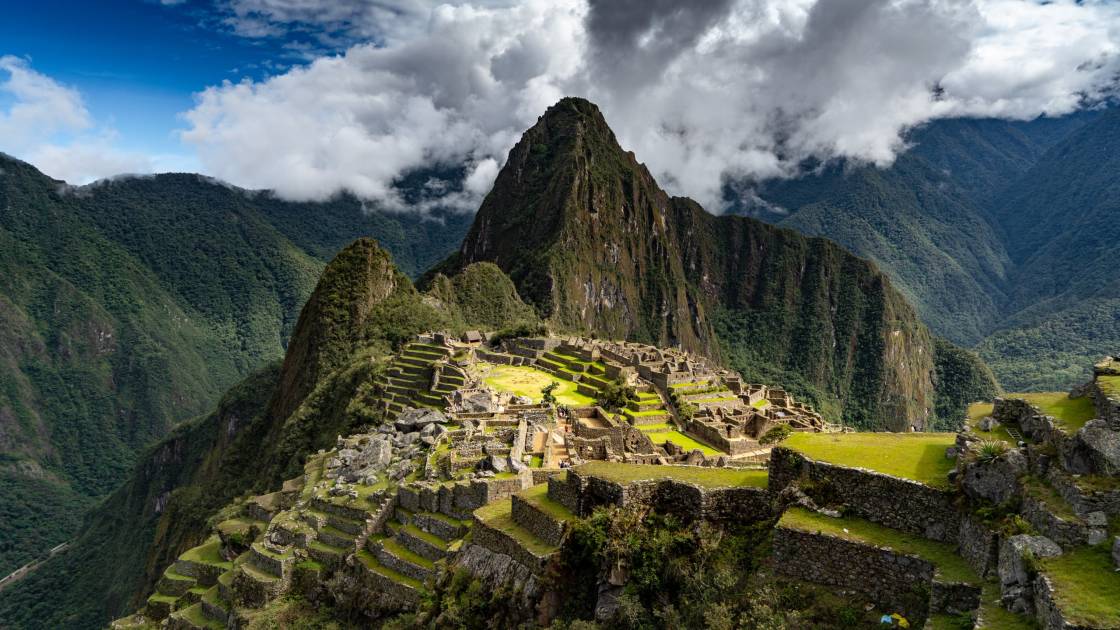
You’ll pass through rainforest, cloud forest, highlands and high mountain passes, beneath glaciers, around turquoise lakes, and past three of the most stunning peaks of the Cordillera Vilcabamba mountain range, before reaching the famous Machu Picchu. There’s definitely something magical about exploring Machu Picchu at sunrise before the day visitors arrive.
The Salkantay trek is a great challenge for those looking to explore the most iconic parts of Peru, off the beaten track. The steep terrain and altitude will make the going tough at times, but anyone with good fitness and a can-do attitude shouldn’t have any issues. Unlike the Inca Trail, where you’ll need to book permits up to six months advance, the Salkantay route has no permit limitations, so you can afford to be a bit more spontaneous.
Another sublime option is the nine-day Choquequirao Trek. This tough and steep route joins up with the Salkantay Trek before reaching Machu Picchu.
When is the Best Time to Hike in Peru?

The dry season stretches from May to October in Peru, and so it is this time which is the best for hiking. Visit and you can hope for blue, azure skies contrasting with the mighty Andean snowcaps, and the deep, green valleys which are bisected by rivers. This is prime time for visiting Machu Picchu, as well as hiking to lesser-known gems like Choquequirao. Daytime temperatures are amiable, though nights in the highlands can be biting. Layers are essential.
Within this, you’ll find fewer people on the trails in May and October, in shoulder season. The wet season, from November to March, paints the countryside in bright and vibrant hues, but it can also make the trails boggy and at times impassable.
Remember that regardless of when you visit, mountain weather can be unpredictable and can change in an instant. Come prepared for all weathers and conditions - and respect the altitude.
What Wildlife Can I See in Peru?

When most people think of Machu Picchu, they think of llamas or alpacas roaming freely around this ancient site. You shouldn’t have too much trouble finding these in the mountains of Peru.
What you may have to work a little harder to see is the spectacled bears and pumas that also live in this area, while if you’re lucky, in the skies, you can see Andean Condors, a symbol of Incan mythology which have an enormous wingspan. Wildlife enthusiasts may be interested in day-tripping to the Mirador Cruz del Condor in Colca Canyon, well-known for condor sightings.
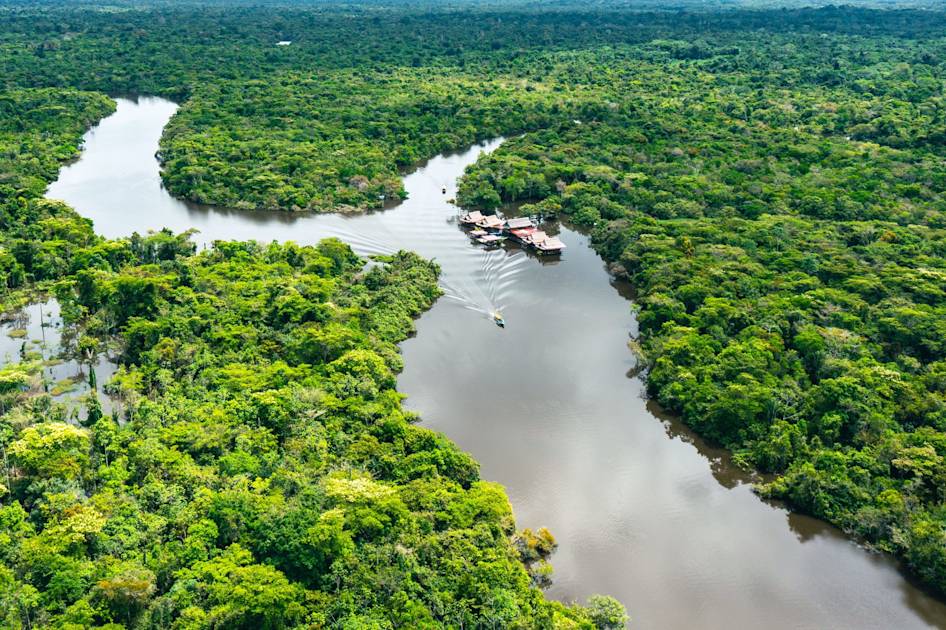
The cock-of-the-rock is Peru’s national bird and can be spotted in cloud forests if you’re lucky. Its bright orange mohawk makes it hard to miss, but it’s not a big bird. It perches on branches.
In the Amazonian basin of Peru, look out for jaguars, sloths, macaws and an abundance more.
Where to Stay in Peru?

Where to start with accommodation in Peru? Let’s go with camping spots. Join a long-distance walking route in the mountains of Peru and you can end up in some stunning destinations.
Picture yourself camping at high-altitude, with far-reaching views out over long, deep canyons, with the stars splashed across the sky above and not an inch of light pollution anywhere near. A particularly obvious example of this is at Choquequirao - where you can actually camp onsite.
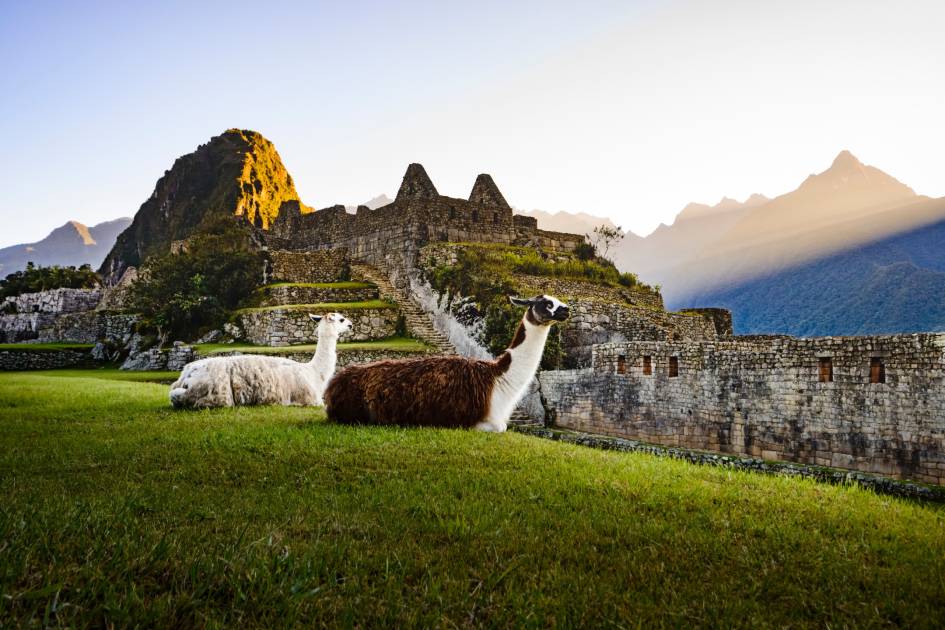
Many trails have designated campsites, meaning these can be social hubs for hikers, while some trails have specialty accommodation too. The Salkantay Trek, for example, has the option of staying in spectacular glass-domed lodges, backdropped by the mountains.
There are mountain lodges, eco-huts, hotels and more luxurious options too. Like most well-developed hiking nations, Peru is a country which has options for a whole host of tastes.
What to Eat in Peru?

Breakfast on the road will likely be bread, pancakes, omelettes, oatmeal or fruit. Soups, sandwiches and salads are often served at lunch as well, while dinners can be chicken, trout, potatoes, quinoa and more. Your porters and chefs along the route will be walking ahead to prepare your meal, or will prepare it when you all arrive together, and it’s no exaggeration to say that any food will taste twice as good after a demanding day of hiking.
One of our favourite dishes to look out for in Peru when off the trail is lomo saltado, a savory stir-fried beef dish blending tender beef and tangy soy sauce.
You can’t go to Peru without trying ceviche - an unusual dish made by marinating raw fish in lemon or lime juice, then adding spices, onion, salt and coriander. This is often made with sea bass, tilapia or halibut, but it can also be made with shrimp or octopus. It’s served with boiled root vegetables.
How to Get To (And Around) Peru?

To reach Peru, you’re going to fly into the airport in the capital city of Lima, which is called Jorge Chávez International Airport.
It’s when you arrive in Lima that the real journey begins. To access the Andes, most travellers will fly on to Cusco, the ancient capital of the Incan Empire, nestled high in the mountains. There is also a daily flight from Lima to Huaraz, where many of the northern hikes begin.
For the adventurous, or those on a strict budget, the long-distance buses offer a more immersive, if slower (and significantly bumpier), experience, winding through Peru’s diverse terrain. Once in the highlands, hiking routes often begin in small towns and are accessible by colectivos (shared shuttle buses) or private transfers. For those seeking to trek deep into the Amazon, boats replace buses, navigating the waterways that lead into the heart of the jungle.
Navigating Peru’s rugged geography demands flexibility and a dash of patience.
Read More:
- Hike Machu Picchu: Which Route Should You Choose?
- A Guide to the Trek to Choquequirao, Machu Picchu’s Sacred Sister
- A Guide to the Sacred Valley of the Incas in Peru
Inspired? Check out our entire collection of trekking holidays in Peru, and other Peruvian adventures.

